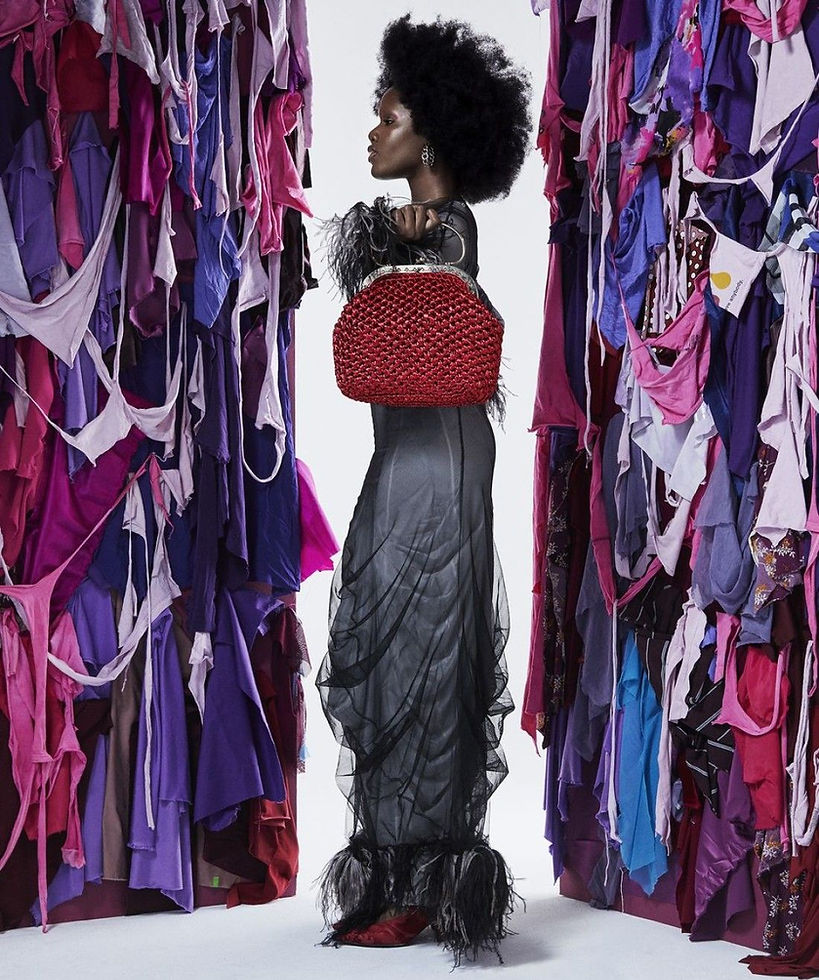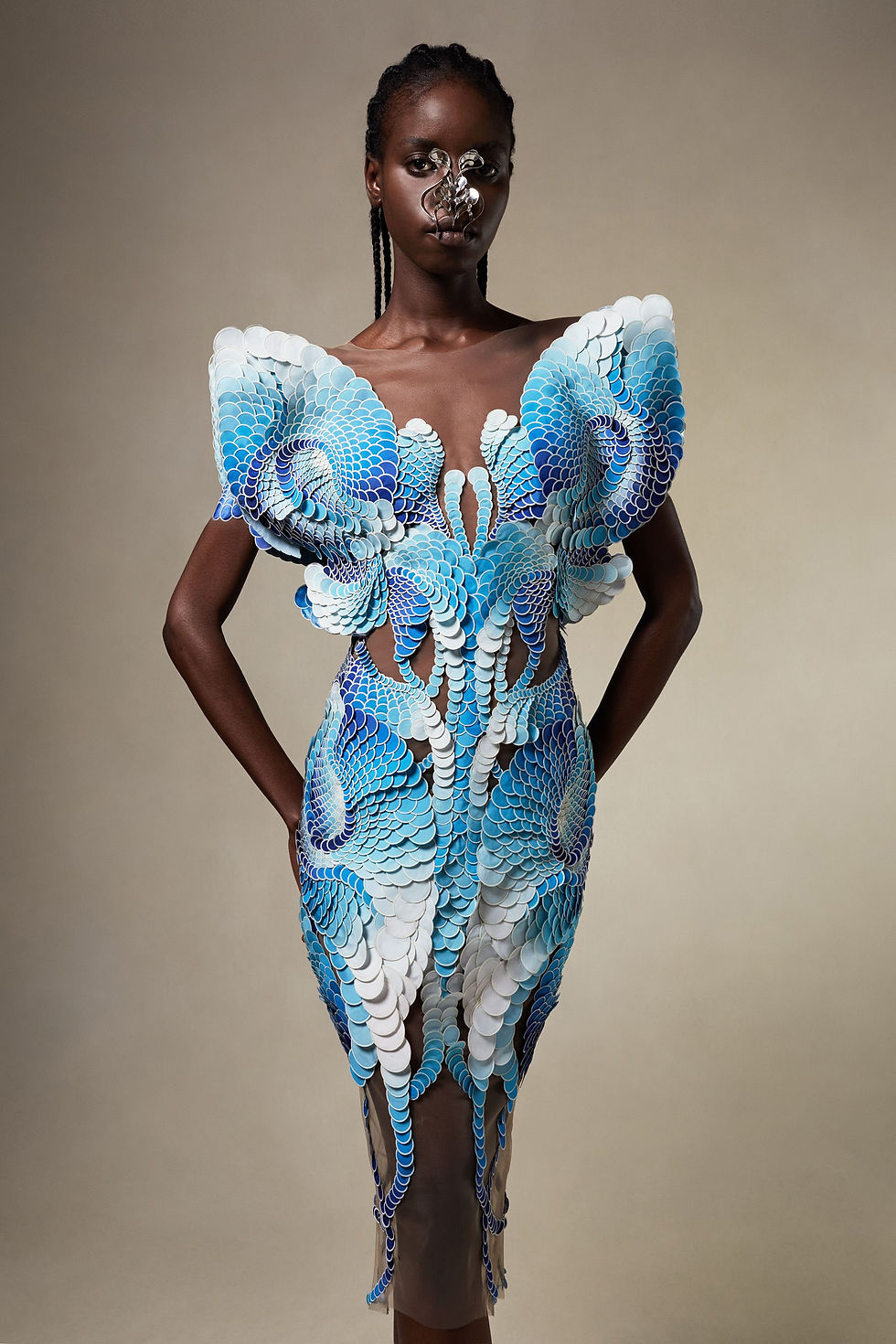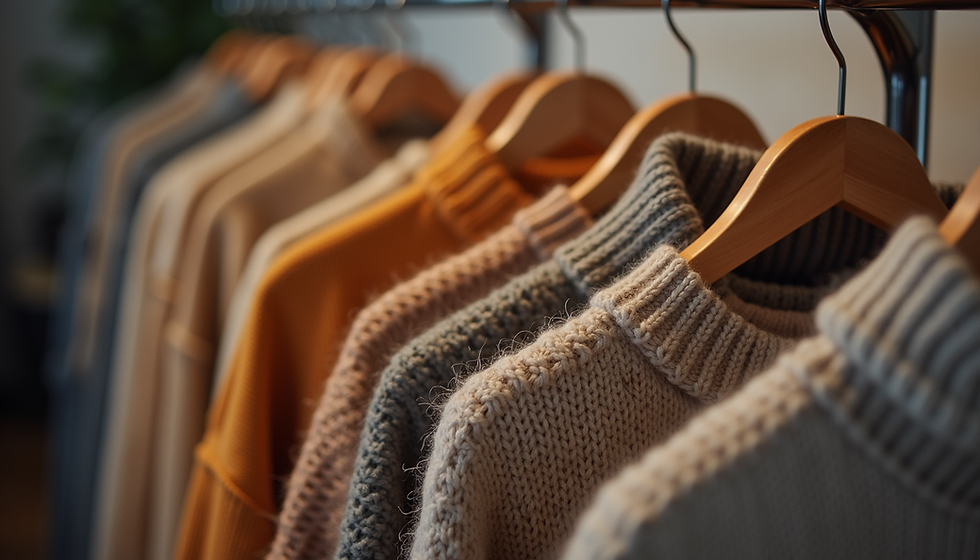
Sustainable Fashion Goals: Resolutions to Innovate Your Wardrobe in the New Year
- Modish Muse Magazine
- Jan 1
- 4 min read
As the new year unfolds, fashion enthusiasts are afforded a pivotal opportunity to redefine their style ethos through sustainable fashion goals. Embracing eco-friendly practices in your wardrobe not only uplifts your personal style but also contributes positively to the environment. This year, let us delve into the realm of innovative fashion resolutions that promise to combine style with sustainability, encouraging a wardrobe that speaks volumes about your commitment to a greener planet. In this guide, we will explore transformative steps to invigorate your closet, featuring insights from industry experts, and inspiring visuals that will empower you to make mindful fashion choices. Join us on this journey towards a more sustainable and stylish future.
Embrace Eco-Friendly Fabrics
Discover Sustainable Materials
Exploring sustainable materials is a pivotal step in building an eco-friendly wardrobe. Options such as organic cotton, bamboo, and Tencel are not only kinder to the environment but offer a luxurious feel and durability. Organic cotton, grown without harmful pesticides, reduces water usage and pollution. Bamboo, known for its rapid growth and renewability, transforms into a soft fabric that is both breathable and biodegradable. Tencel, made from sustainable wood sources, is celebrated for its low environmental impact and silky texture. By opting for these materials, fashion enthusiasts can significantly reduce their carbon footprint, embracing a wardrobe that prioritizes both style and sustainability. Expert opinions highlight the importance of supporting brands that prioritize these materials, as this drives demand for environmental responsibility in the fashion industry. Below are some inspiring visuals to guide your journey in discovering sustainable fabrics:

Benefits of Organic Textiles
Organic textiles offer a multitude of benefits that extend beyond their eco-friendly production. Firstly, they are free from harsh chemicals and pesticides, making them a healthier choice for both producers and consumers. This results in a reduced risk of allergies and skin irritations, enhancing comfort and wearability. Environmentally, organic textiles contribute to healthier soil and ecosystems, as their cultivation supports biodiversity and conserves water resources. Moreover, the use of organic textiles promotes fair trade practices, ensuring that workers receive fair wages and work in safe conditions. This ethical approach not only empowers communities but also fosters a sustainable fashion economy. Experts advocate for the adoption of organic textiles as they represent a crucial shift towards reducing the fashion industry's environmental impact. Embrace the benefits of organic materials in your wardrobe, knowing that each piece contributes to a healthier planet and a more ethical fashion landscape.

Innovate with Upcycled Fashion
Creative Ways to Upcycle
Upcycling offers a unique opportunity to transform old garments into fresh, stylish pieces, reducing waste and inspiring creativity. Begin by identifying pieces in your wardrobe that no longer serve their original purpose. A simple t-shirt can be reimagined into a trendy tote bag or a chic crop top. Old jeans can be transformed into a fashionable denim skirt or a pair of shorts. Accessories such as scarves or belts can be crafted from leftover fabric scraps, adding personalized flair to any outfit. Collaborating with local artisans or attending upcycling workshops can further enhance your skills and introduce you to innovative techniques. By embracing upcycling, not only do you extend the life of your clothes, but you also cultivate a personal style that is both sustainable and unique. The journey of upcycling is not just about fashion; it's about fostering a deeper connection with your wardrobe.

Transforming Old into New
Transforming old clothing into new creations is an art that combines sustainability with innovation. Begin by assessing your wardrobe for pieces that are outdated or damaged but still hold potential. A faded dress can be dyed to rejuvenate its color or altered into a top. Sweaters with holes can be repurposed into cozy mittens or a stylish beanie. Shift your perspective to see each garment as a blank canvas for your creativity. The process not only saves money but also reduces environmental impact by minimizing textile waste. Seek inspiration from online platforms or DIY fashion communities to discover diverse upcycling techniques. Each transformation is a step towards a more sustainable lifestyle, encouraging us to value the resources already available to us. Through these efforts, fashion enthusiasts can cultivate a wardrobe that reflects both personal style and a commitment to environmental responsibility. Embrace the challenge to transform old into new and witness the magic unfold.
Support Ethical Fashion Brands
Identifying Ethical Labels
Identifying ethical fashion labels requires a discerning eye and a commitment to supporting brands that prioritize sustainability and fair labor practices. Start by researching brands that have transparent supply chains and certifications such as Fair Trade, GOTS (Global Organic Textile Standard), or B Corp. These certifications often indicate that a brand adheres to high environmental and ethical standards. Look for companies that disclose information about their manufacturing processes, sourcing of materials, and treatment of workers. Ethical brands typically engage in practices that ensure fair wages and safe working conditions, while also minimizing their environmental footprint. Reading customer reviews and expert opinions can also provide insights into a brand's ethical stance. By choosing to support ethical labels, consumers contribute to a more equitable fashion industry and promote practices that value both people and the planet. Each purchase becomes a vote for sustainability and ethics, driving positive change in the global fashion landscape.
Impact of Conscious Consumerism
The rise of conscious consumerism in fashion significantly influences the industry by shifting demand towards more ethical and sustainable practices. When consumers favor brands with transparent, fair, and environmentally-friendly operations, they encourage the industry to prioritize these values. This shift drives brands to adopt sustainable materials, reduce waste, and ensure fair labor practices. Conscious consumerism also pushes for innovation, prompting brands to develop eco-friendly technologies and processes. As a result, the fashion landscape becomes more inclusive and responsible, aligning with global sustainability goals. Furthermore, consumers who practice conscious buying often inspire others, creating a ripple effect that amplifies positive change. By making informed purchasing decisions, individuals can reduce their environmental footprint and promote social justice, supporting a more equitable global economy. Ultimately, each act of conscious consumerism empowers individuals to contribute to a fashion system that respects both people and the planet, fostering a culture of sustainability and ethics in everyday life.




Comments